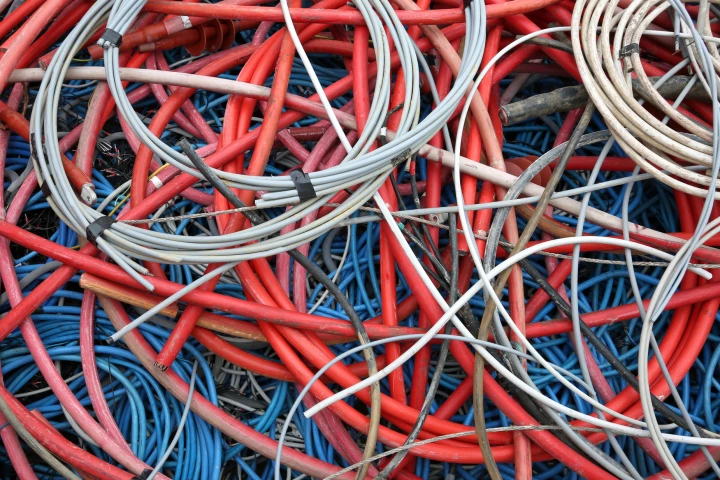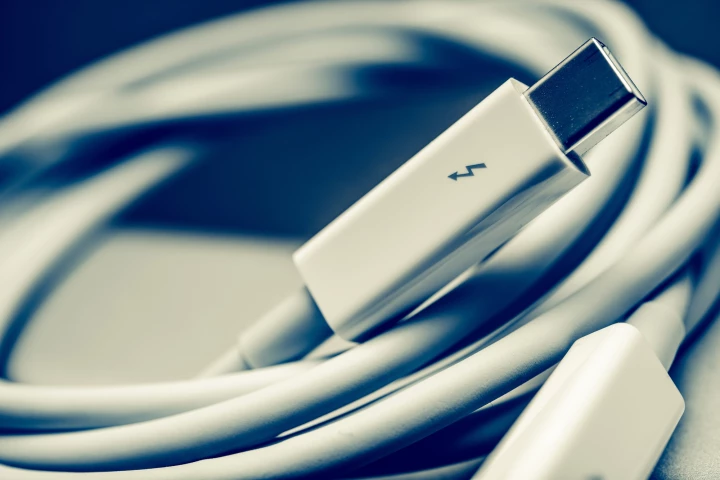Cable
-
Italian and Japanese researchers have developed a novel method to free copper wire from its PVC coating, by treating electric cables with microwaves. The technique could go a long way towards helping tackle the growing problem of e-waste.
-
Intel has demonstrated a prototype of the next generation of its Thunderbolt interface. The new connection will be up to three times faster than the existing Thunderbolt 4 – at up to 120 Gbps – when it debuts next year.
-
USB devices are set to become much faster in the near future. The USB Promoter Group has now announced the USB4 Version 2.0 specification, which will double data transmission rates to a blistering 80 Gbps.
-
Back in 2011, we first heard about an MIT-developed system that essentially allowed robots to "see" through their fingertips. Now, the technology is being used to let them finely manipulate electrical cables.
-
Google researchers have come up with a textile-covered cable that can pause music playback on a smartphone with a tap, skip tracks with a double-tap and control volume with a twist.
-
A new charging cable might be able to withstand a few months of being bent into shape, but give it enough time and those wires will start to give way. The USB93 is a rather clever solution to this dilemma, using a rotating ball to avoid undue stress on the cable and keep things in working order.
-
The HDMI Forum’s Technical Working Group has released the specs for HDMI 2.1, as well as a new Ultra High Speed HDMI cable. Some of the 2.1 spec’s features will be backward compatible with your existing HDMI 2.0 cable, others will require you to upgrade.
-
Looking for a way to offer smart TV functionality without having to buy into a closed system, InnSpire has developed an Android-powered set-top box that's crammed into an Ethernet cable, which means that hotels can turn standard room TVs into smart TVs just by plugging them into the wall socket.
-
R&M Tone Technology has developed a new line of patented active guitar cables to help players inject some life into their guitar sound. Each PowerWire cable comes with a built-in preamp that boosts the signal direct from the pickups instead of at a pedalboard or amp.
-
AT&T plans to give cord cutters the gift they've been waiting for just in time for the holiday season. The service provider plans to launch a new streaming service called DirecTV Now in the United States by the end of November.
-
Using a technique known as Probabilistic Constellation Shaping, Alcatel-Lucent and Nokia Bell Labs researchers claim to have achieved subsea optical fiber transmission speeds equivalent to streaming more than 10 million HDTV channels simultaneously across a single cable.
-
A new trans-Pacific submarine cable built by NEC with the backing of a consortium of telecom companies and Google came online Thursday. The FASTER cable connects the U.S. west coast with Japan via a six-fiber pair cable bringing 60 Terabits per second (Tbps) of bandwidth under the Pacific.
Load More











